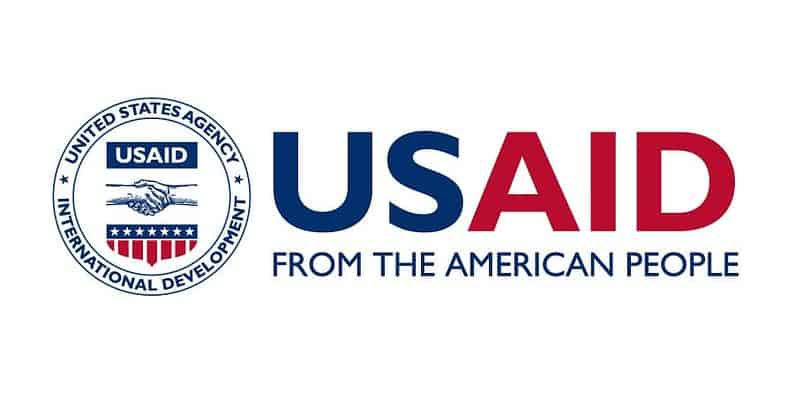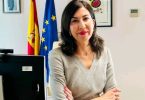GOSPODIN. CAPEHART: Počnimo sa velikom slikom. Kako i na koje načine su žene neproporcionalno pogođene klimatskim promjenama?
MOĆ ADMINISTRATORA: Pa, prvo, dozvolite mi da se zahvalim onima od vas koji organizuju ovaj događaj.
I samo recite da je ovo moja 10. Generalna skupština UN-a – ne, moja 11. Generalna skupština UN-a i ovo je prvi put da sam na ovakvom događaju, koji se upravo postavlja na glavni izvor mnogih problema i veliku potrebu u smislu rješenja .
Dakle, prvo bih rekao, žene su, kao i sve marginalizovane osobe, sve ranjive populacije imaju tendenciju da budu neproporcionalno pogođene klimatskim promjenama. To vidimo u manjinskim zajednicama u ovoj zemlji iznova i iznova. Vidimo kako se to odvija širom svijeta.
Ako pogledate stvarne stope žrtava ili smrtnosti u prirodnim vanrednim situacijama, vidite žene i djecu koji snose najveći teret. I mogli biste pomisliti, o, pa, to je biološka razlika i možda oni ne mogu pobjeći plimske valove ili bilo šta drugo.
Ali mnogo se radi o rodnim normama i bilo tako, osjećaj kao da vam je potrebna dozvola da biste znali možete li otići i biti zarobljeni u domovima. Uopšteno govoreći, to je samo odgovornost za toliko toga u smislu dobrobiti porodice. I ne biti u poziciji, opet, staviti vlastitu dobrobit na vrlo istaknuto mjesto.
Vidite to iz dana u dan, ranjivosti, kako voda presušuje, a upravo sam bio na toliko mjesta – siguran sam da i mnogi od vas jesu – gdje je tako oštro čak i iz godine u godinu, kako pejzaži su drugačiji od onih prije samo deset godina. Ali jedna stvar se nije toliko promijenila, a to je norma da žene idu po vodu u seoskim sredinama, pa kako voda u blizini naselja presuši, žene moraju hodati sve dalje i dalje.
I to je, naravno, bilo užasno sredstvo ili način na koji su žene na putu stalno bile izložene rodno zasnovanom nasilju. Dakle, što dalje idete, manje zaštite imate, više se čini da te druge norme koje nemaju na njihovom licu imaju toliko veze sa klimatskim promjenama same po sebi – norma koja ukazuje da je u redu napasti ili napasti ženu – ta norma se tada ukršta i tako opet znači različit uticaj na žene i u tom sektoru.
GOSPODIN. CAPEHART: Dakle, gdje su u svijetu ova pitanja najakutnija?
MOĆ ADMINISTRATORA: Pa, teško je izabrati. Daću vam samo kratak obilazak mog nedavnog horizonta, ili šta god da je unazad verzija horizonta.
Prošle godine sam putovao u Pakistan kada je trećina zemlje bila pod vodom zbog kombinacije neviđenih kiša i topljenja glečera – sudarajući se odjednom – i neadekvatne pripreme i infrastrukture. I opet, često su žene, posljednje ostaju da zaštite imovinu, da zaštite stoku dok muškarci idu u potragu za pomoći. Mislim, svi su pogođeni na strašne načine.
Putujući odatle u sjevernu Keniju i Somaliju da vidimo pet uzastopnih neuspjelih kišnih sezona. Dakle, potpuno suprotno od onoga što sam vidio u Pakistanu, koji je samo isušena zemlja. Milioni stoke su umrli od suše na Rogu Afrike. Možda mislite, pa, glavni efekat će biti na stočare, koji su, naravno, ljudi koji uzgajaju stoku.
I naravno, vi ste zapravo vidjeli veliki porast samoubistava ovih ljudi, jer su oni milenijumima uzgajali životinje i odjednom su čitava njihova krda koza ili kamila zbrisana samo tako.
Ali kada je riječ o upravljanju posljedicama na porodice i teškoj akutnoj pothranjenosti s kojom su ostali mladi ljudi, posebno djeca mlađa od pet godina, žene su morale da se nose i sa malodušnim muževima, da se pozabave pitanjem šta će biti sa sinovima koji su imali zamišljali da se taj način života nastavlja i sada odjednom razmišljaju: „Kako da im dam alternativni život, alternativni poziv“, ali i tada u poziciji da pokušavaju pronaći hranu za najmlađe.
Mislim, opet, pogađa na različitim mjestima. Bio sam samo, poslednji koji vam nudim je, upravo sam bio na Fidžiju.
I naravno, za sva pacifička ostrva – to su skoro sva – to je egzistencijalna prijetnja.
Radi se o tome da će čitave nacionalnosti morati da shvate u nekoliko godina unapred gde će se preseliti, čime se bave, na primer, da li mogu da žive u delovima zemlje, posebno na ostrvima, koji su tako nisko ležeći.
I samo mali primjeri s rastućom industrijom gdje su žene tamo.
U ovom slučaju, sreo sam ženu sa grupom žena koje su uzgajale morsko grožđe – koje je, inače, ukusno.
Nikada ranije nisam jeo morsko grožđe. I bili su tako ponosni na svoje morsko grožđe. A, USAID pokušava da ih podrži, dobije mikrokredit kako bi mogli da grade svoj posao, da razvijaju svoj biznis.
Ali samo uzgred, i tu se klimatske promjene pojavljuju na svakom koraku.
Kažu, pa, jedini problem ovih dana je što sada moramo čamcima sve dalje i dalje, jer kako se okean zagrijava, zagrijava se posebno blizu obale, pa moramo ići dalje. Dakle, idemo dalje po morsko grožđe, što znači mnogo duže od svih ostalih obaveza koje imamo kao žene u domaćinstvu.
Štaviše, koristimo čamce na gorivo, tako da izbacujemo više emisija u zrak dok idemo i pokušavamo povratiti ovo morsko grožđe kako bismo razvili naše poslovanje.
Dakle, znate, opet, gdje god da pogledate, pacifička ostrva, Afrika, Azija – to su zajednice koje padaju.
GOSPODIN. CAPEHART: Želim da dođem do vaših pomenutih mikrokredita, želim da dođem do pomoći koju daje USAID. Ali da li su ova pitanja o kojima upravo govorite, to je mnogo u zemljama u razvoju, ali da li je ono o čemu govorimo ograničeno na svet u razvoju?
MOĆ ADMINISTRATORA: Ne, teško, ali slučajno...
GOSPODIN. CAPEHART: To se zove sugestivno pitanje.
MOĆ ADMINISTRATORA: Mi živimo, mislim – mislim da smo u našoj dvadeset trećoj prirodnoj katastrofi koja je trenutno koštala više od milijardu dolara u SAD-u.
Doživjeli smo naš najtopliji dan, sedmicu i mjesec do sada, mislim samo u posljednjih nekoliko mjeseci. Po prvi put smo morali ugasiti određene firme, ljetne kampove i prilike za mlade zbog dima koji se širio u naše živote.
I opet, različiti uticaji. Ovo je možda mali primjer, ali kada dijete ne može ići u kamp, to će biti majka koja radi – u većini domaćinstava, svakako u mom – koja će morati da shvati šta – to je kao verzija onoga što se dogodilo sa COVID-om.
Kada klima udari, bilo na male ili prolazne načine koji imaju ozbiljne posljedice po zdravlje i ozbiljne utjecaje na životni stil, to će se pobrinuti za više zadataka u domu.
Ali, mislim, ne mogu se precijeniti samo finansijski efekti štete koja se sada čini na onome što se nekim dijelovima Sjedinjenih Država čini gotovo svakodnevnom.
Događa se da to nije ono na čemu USAID radi jer mi radimo u inostranstvu.
A naš rad, rekao bih, jedan od najvećih tenzija i izazova s kojima se borimo je da nam se daju fiksni resursi i resursi koji uopće ne idu u korak s razvojnim zastojima koje klimatske promjene uzrokuju.
Iako rastu, naši resursi rastu. Ali jednostavno ne možeš pratiti. Ali drugi problem nije samo to. Radi se o tome da toliko naših resursa ide na održavanje ljudi u životu u vanrednim okolnostima poput onih u Libiji tek prošle sedmice – ili onih koje sam spomenuo u Pakistanu ili Somaliji.
A ono što ne biste učinili je da uzmete svu tu humanitarnu pomoć i uložite je umjesto toga u infrastrukturu otpornu na katastrofe ili u sjeme otporno na sušu ili u te mikrokredite malim poljoprivrednicima koji su zapravo sposobni koristiti svoje pametne telefone za predviđanje ekstremnih vremenskih događaja i barem ublažiti koji su to gubici.
Dakle, ono što sam opisao je neka razlika između otpornosti i hitne pomoći. I mi smo veoma ponderisani kao vlada i kao donatorska zajednica koja je velika prema – mislim, to je prelepa stvar, prelepa je privilegija pokušati pomoći ljudima da prebrode najgore trenutke svog života.
Ali ako to radite na taj način, što je prilično zastoj, znate da ćete se tome vratiti. A to je dodatno srceparajuće.
Jer ranije se govorilo, rekli bismo klimatski šok, ali sada je to kao, da li je to šok kada je to predvidljiva karakteristika određenog dijela poljoprivrednog života jedne zemlje? I šta to od nas traži?
Da je kolač veći, drastično bismo povećali svoja ulaganja u otpornost, što bi i trebali raditi. Teško je ne spasiti živote u interesu spašavanja života na duži rok. Tako da balansiramo najbolje što možemo. Ali to nije zabavno balansiranje.
GOSPODIN. CAPEHART: Predvidjeli ste pitanje koje ću postaviti, preskačući dio mikro kredita, pa ću skočiti naprijed. Hajde da razgovaramo o odnosu između ekonomskog razvoja i klimatskih promena.
Koliko su ti problemi usko povezani i kako ih USAID istovremeno rješava?
MOĆ ADMINISTRATORA: Pa, mislim, rekao bih da jesmo ili se krećemo prema, dozvolite mi da kažem jer imamo dug put do ugradnje pažnje na klimatske promjene kao dizajnerske karakteristike cijelog našeg rada.
Dakle, jedna vrsta strukturalnog, možda čudnog primjera ovoga je da smo uzeli naš Biro za sigurnost hrane i otpornost i spojili ga sa našim klimatskim timom. I tu je – ali veza za koju je ljudima sasvim očigledna nije savršeno preklapanje, ali ima tona – poljoprivreda je glavni izvor emisija, tako da te emisije treba da se smanje.
I naravno, klimatski pametna poljoprivreda će biti način na koji ćemo sačuvati sigurnost hrane ili je povećati u godinama koje su pred nama. Dakle, to je jedno spajanje. Ali što se tiče obrazovanja, to je broj jedan. Mislim, svi mi, bilo ko od nas koji imamo decu, to je stvar broj jedan koju deca žele da znaju o nama nije samo šta će se desiti sa svetom koji ja poznajem, već i šta mogu da uradim povodom toga?
Dakle, čak i razmišljanje o obrazovanju u upravljanju – to je tako fundamentalno destabilizirajuće za vlade koje ne mogu pratiti klimatske promjene, bilo na strani otpornosti ili na strani vanrednih situacija, jer to pogoršava ovaj gubitak povjerenja u institucije koji vidimo u tako mnogim dijelovima svijeta.
Ne radi se samo o izvozu tehnologija za nadzor, znate, iz NRK-a ili demokratija koje su napadnute drugim sredstvima.
Postoje samo stvari koje se dešavaju u svijetu, a kada vlada ne može pratiti, to pojačava taj cinizam prema institucijama. Dakle, ovo je dug put da se kaže da radimo na upravljanju u USAID-u, radimo na obrazovanju, radimo na javnom zdravstvu koje je potpuno povezano sa klimom.
Dok gledate na promjene u obrascima malarije, mislim da SZO predviđa da će dodatnih 250,000 ljudi umreti do 2030. od klimatskih promjena – bilo da se radi o toplotnom stresu ili malariji ili nedostatku vode, pothranjenosti koja proizlazi iz toga.
Dakle, ono što trebamo stići kao agencija je da ugradimo pažnju na otpornost i pažnju na klimatske promjene i šta to znači za zajednicu u sve što radimo.
In a sense, USAID is a climate agency, even if we still have a climate team that works as a climate team per se, mainstreaming this agenda is what our missions are trying to do all around the world.
And this is not because I anticipate the, you know, the concerns of some maybe in our domestic politics on this – and I’m sure you’ll get there, but this isn’t USAID foisting anything.
This is the cri de coeur for you know, heard all around the world, that this is a game changer. Our development trajectories were going here – COVID hit and now we have what could feel like a COVID-like, not not of the same scale, but battering again and again and again.
So just as we’re now thinking differently about pandemic prevention, what should that lead us to think about when it comes to embedding climate in the mindset of all public spending and all notions of mobilizing, mobilizing private capital, because that’s, of course, going to be a big part of the solution.
So we’re that’s – it’s this mainstreaming and not having climate live over here. But given that it is this game changer and given it’s our host countries and the communities in which we work and of it works. It’s John F. Kennedy’s pleading gives us more of the tools to adapt to this shell-shocking phenomenon.
GOSPODIN. CAPEHART: Well, I asked the question about economic development because, with economic development comes perhaps better lives, and better living conditions, which then can exacerbate the issues related to climate change.
So how do you – and I wrote it down really fast – that mainstreaming, how in mainstreaming climate in the things that you do. How do you find that balance between helping people help themselves, while at the same time not doing it in a way that exacerbates the climate problems that we all have to face?
MOĆ ADMINISTRATORA: Yeah, and I mean, I think one example I think that you’re alluding to is, you know, as people get richer, they buy more meat and that causes, you know, more emissions or they travel more, they’re flying more there.
And absolutely, I mean, we’ve seen that the emissions trajectory in both the PRC and India reflected that.
Our emissions trajectory, back as we were bringing our economy online and modernizing, absolutely reflects that. So I think that is profound. I will say the fact that solar power, the cost of solar has come down by 85 percent. The cost of wind is down by 55 percent. Where we work, the demand signal for renewables is very, very significant – which doesn’t get it mediating some of the other features of getting wealthier.
But it does get to the urgency of making clean energy transitions as these prices come down. It is a better bet. And so again, when we have these exchanges on the Hill and it looks to some who are skeptical somehow still of climate programming, you know, that we’re bringing our green agenda to the countries in the communities we’re working in – no, it’s not like that at all.
They’re saying we can’t afford this other thing.
But actually, we can pop up a solar panel and have a water pump that we’ve been trying to get in this village. We can go off the grid in ways we never – where the state is not going to get here any time soon.
This was my experience out in Bekaa Valley in Lebanon, where USAID had worked to, you know, build a bunch of solar panels that powered electricity and ended up actually reducing tension between refugees who were being generously sheltered by Lebanese host communities, Syrian refugees, and the Lebanese.
Because they were no longer fighting over water because they had water because they had solar – but to attach to the grid, no way. And so then those tensions, who knows what would happen with that.
So the idea is that these investments are cost-effective over time, that actually you can develop, along the lines of what you’re describing, in a clean way.
I think the other aspects of consumption need to be dealt with as part of civic education and as part of norm work because it is true that in many, many societies, and again, including our own back in the day, as you increase your livelihoods, your income, consumables are a very attractive way to expand those new resources.
This feels like a high-class problem in most of the countries we’re talking about. I mean, I’m talking about working with small-scale farmers who are paying double this year for fertilizer than they were paying before Putin invaded Ukraine, who just need a little loan to be able to get access to some of those drought-resistant seeds that are going to increase yields by 25 percent.
But again, finding the resources to get them that. Getting the private sector interested in adaptation. But the question that we should be thinking now about, if we can be successful, if we can help them withstand the negative effects of climate change and the like here in America, grow jobs out of also these changes to their economies, then what?
Then we will be grappling with the kinds of things that have further fueled emissions in more recently developed countries.
GOSPODIN. CAPEHART: As you alluded to many times, there’s a lot of good news related to the development of clean energy alternatives. That being said, though, global emissions once again hit a record high in 2022, and carbon dioxide in the atmosphere has risen to levels not seen in millions of years. Are we moving in the wrong direction despite glimmers of hope?
MOĆ ADMINISTRATORA: Well, I mean, I think all of us can answer that question in two ways. And we talk to ourselves all day – on the one hand this, and on the other hand that. But what we can say is we’re certainly not moving fast enough. And you know what breaks my heart is, it’s a little bit like another version of the vicious cycle you were kind of describing.
But when you see the wildfires, and the rate of wildfires, and then all of the carbon emitted and all of the good that had been done with carbon emission reductions – and that being not washed away – whatever, smoked away, burned away – that’s heartbreaking because these investments are accelerating.
They are building momentum. So I think that, and that’s not the only thing that’s heartbreaking.
There’s so much that’s happening day to day and a little bit of the despondency, I think, setting in as well – as people just open the newspaper, and whether it’s in their own community or one further afield or even something like what happened in Libya, which just captures the imagination of, which was its own sui generis issue with regard to governance and infrastructure, but would not have happened that way but for the intensity of Storm Daniel, which is just being seen in so many communities.
But what I do think it’s important to come back to, at least as proof of concept, is that in Paris the projections – they were, we the world, were on a track to warm 4 degrees and we are now on a track to warm 2.5 degrees.
So that is a reflection of the agency that people have claimed over this trajectory. The problem is we need to curb warming at 1.5 degrees, but that delta from four to 2.5 should give people at least a sense that actually collectively we are doing things that are making a difference. There’s no doubt we are doing things that are making a difference.
If I could, though, I think the area that we have – I mean, as John Kerry likes to say, if we don’t get mitigation right and the carbon reductions right, there’ll be no planet to adapt. He makes a comment like that a lot.
We, at USAID, are in the mitigation and adaptation business, as is Secretary Kerry and his team. But I think in mitigation, what I think gives one hope is just how much the private sector has leaped in now recognizing that there’s money to be made. And I’d love to rely on people’s good intentions and their feeling of fellow humanity, but it’s much more reliable if they think there’s money to be made.
And that shift has occurred. And you see it in the IRA, which is already defying even the best projections and extrapolations that people did. I mean, this is going to have way more collateral effects and bring down carbon way more, I think, than people could have, just strictly speaking, anticipated because of a cascade now of private sector interest fueled and catalyzed by the underlying legislation.
And so too, as the prices come down again, there’s a virtuous cycle. Adaptation – we’re not we’re not there. And I don’t know if we’re ten years behind where we are on mitigation – where we are on mitigation.
Like it’s the same thing going to happen in ten years where we look back and say, oh, we lost all that time. Why couldn’t private-sector actors have seen as well that there’s good to be done and money to be made?
I guess if you have to think that way around the insurance industry in the agricultural sector, in Fintech, I mean, all these tools are going to be absolutely critical in particularly rural areas and those areas that are most vulnerable to climate change.
But about two percent of funding for adaptation comes from the private sector right now, and that has just got to change.
So President Biden and we have done a big call to action to the private sector, but it’s slow going. And even if you take – forget the specific sectors that have a direct nexus with the need to build resilience – look at it in even more stark terms. The market share that so many companies are hoping to capture is themselves going to have less money to spend, maybe in flight, maybe at war.
And so the positive of that is, hey, if we can help them adapt and be more resilient and where these emergencies happen, but don’t wallop communities in the same way and they bounce back, those are consumers that will be our consumers. But the negative is what if, you know, millions, tens of millions of consumers are taken offline because they are driven into poverty?
The predictions now are that 100 million more people driven into extreme poverty by 2030. But that’s within our hand, that adaptation. There’s so much less to, as I would say to my kids, there’s room to grow.
The areas that are the most troubling in some ways, there’s really room to grow. And you could see a cascade of the kind that we’ve seen on carbon mitigation.
GOSPODIN. CAPEHART: Administrator Power, we got a minute and eight seconds and this will be the final question. The name of this conference is This is Climate: Women Leading the Charge. So how do you see women reshaping climate leadership?
MOĆ ADMINISTRATORA: We, USAID, and Amazon, the company, not the forest, launched a gender equality fund, a gender equity fund at COP, and we launched it with $6 million in funding. And this is for women.
It’s for projects that will benefit women, it’s for projects that are driven by women in adaptation or in mitigation – the whole or the protection of natural ecosystems – but things broadly in the climate space.
And today we have the Visa Foundation and Reckitt, a company out of the United Kingdom, who have joined us and matched that initial – USAID put in $3 million, Amazon put in $3 million, and have added $6 million.
Why do I mention this? It’s not a huge amount of money yet. We are going to get up to $60 million, we hope, in rapid order.
This is part of another cascade that we would like to see. We’ve put out a request for proposals, incredible women leaders are putting proposals in.
These can be small projects. A lot of the climate finance right now is not going to small projects, it’s going to big international organizations. So working more with local partners is going to be absolutely key.
But these are going to be the success stories that are going to inspire people to invest more and to believe that change can come. And sadly, there are just not that many examples of climate finance facilities that are targeted and tailored toward women, even though women are bearing the greatest brunt.
And women, I think, in my experience, are doing the most innovative work in dealing with the consequences of climate change and trying to lower those consequences in the years ahead.
GOSPODIN. CAPEHART: Samantha Power, the 19th Administrator of USAID, thank you very much for joining us today.
MOĆ ADMINISTRATORA: Thanks, Jonathan.
What is USAID?
USAID stands for the United States Agency for International Development. It is an independent agency of the United States federal government that is primarily responsible for administering civilian foreign aid and development assistance. USAID’s mission is to promote economic and social development in countries around the world, with a particular focus on reducing poverty, promoting democracy, and addressing global challenges such as public health crises, environmental sustainability, and humanitarian crises.
Some of the key functions and activities of USAID include:
- Providing humanitarian assistance: USAID responds to natural disasters, conflicts, and other emergencies by providing humanitarian aid, including food, shelter, and medical supplies, to affected populations.
- Promoting economic development: USAID works to stimulate economic growth in developing countries by supporting projects and programs that create jobs, improve infrastructure, and foster private sector development.
- Supporting democracy and governance: USAID promotes democratic governance by providing technical assistance and support for fair and transparent elections, strengthening civil society organizations, and advocating for human rights and the rule of law.
- Advancing global health: USAID plays a crucial role in global health initiatives, including efforts to combat infectious diseases like HIV/AIDS, malaria, and COVID-19. It supports healthcare systems strengthening, family planning, and maternal and child health programs.
- Environmental sustainability: USAID works to address environmental challenges, including climate change and natural resource management, through projects that promote conservation, renewable energy, and sustainable agriculture.
- Education and capacity building: USAID invests in education and capacity-building programs to enhance the skills and knowledge of individuals and institutions in developing countries, thereby contributing to long-term development.
- Food security and agriculture: USAID supports programs aimed at improving food security, increasing agricultural productivity, and reducing hunger and malnutrition in vulnerable populations.
USAID operates in partnership with governments, non-governmental organizations, international organizations, and other stakeholders to achieve its development goals. It is often involved in projects and initiatives that aim to alleviate poverty, promote stability, and enhance the well-being of people in countries where it operates. The agency’s work is guided by the foreign policy objectives of the United States and the broader goal of fostering global development and progress.























